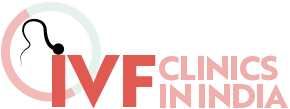Primary reason for a thin endometrial lining is lack of adequate estrogen. Your doctor can check if the estrogen level in your body is adequate with a blood test. If it is below the normal range, you can replenish your estrogen level in the form of tablets, injections or patches
A healthy embryo needs a receptive endometrium for successful implantation. The normal endometrial thickness should be more than 7 mm in thickness at the time of embryo transfer. In our unit, we transfer the embryos, when the endometrium in 9 mm, as a rule. However worldwide, the minimum cut off is 7 mm. The endometrium should also have a triple line appearance and adequate blood flow on colour doppler examination. In rare cases pregnancies have been reported in endometrial thickness between 5 to 7 mm. Thin endometrium is one of the major causes of implantation failure Majority of patients have past history of a surgical procedure or infections which lead to endometritis. The diagnosis is made by ultrasound and a premenstrual diagnostic cum operative hysteroscopy in the cycle prior to the frozen thaw cycle. A histopathology and a TB PCR test to rule out tuberculosis infection is a must. In recent time, one can also do geneticNGS studies of the endometrium to find our whether there are infections by other organisms such as streptococci or staphylococci. One can also study the level of lactobacillus organism (in good endometrium, the lactobacillus is > 90 %) in the endometrium. Many times, despite of any cause, we encounter thin endometrium, when we are preparing the patient for frozen thaw cycles. In these patients, despite of one or two attempts of trying to develop the endometrium with hormones, there is failure. In such patients we try to improve the endometrium by giving higher doses of estrogen hormone by transdermal /vaginal route, supplement patients with adjuvants medicines such as oral/vaginal sildenafil, oral aspirin, oral L arginine, oral Vit E, sub cutaneous low molecular weight heparin etc. We may additionally do procedures such as pipelle, Intrauterine GCSF/PRP, or very rarely intrauterine bone marrow stem cells therapy (experimental) . We get very good results with intrauterine GCSF with or without PRP. We are pioneers in this, and have had hundreds of pregnancies over the years .
